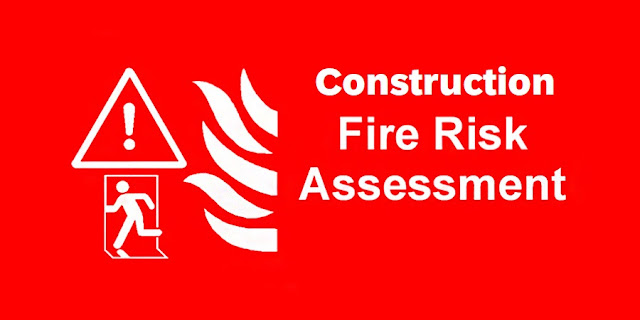FIRE RISK ASSESSMENT IN
CONSTRUCTION - IDENTIFY
SOURCES OF OXYGEN
What is 5S Quality | 5S System in Industry | 5S Principles
Causes of Arc Flash – Electrical Incident
In many countries, the regulation requires a suitable
and sufficient fire risk assessment to be carried out by a accountable person.
The below basic principles are relevant to fire risk
assessment in all circumstances. However, note that there will be different
things to consider for new builds compared with the renovation of an existing
building.
For a newly build, the assessment will include its
location and proximity to other buildings, the type of construction materials
and methods.
When identifying potential fire hazards, as well as
looking at hazards on site, try to identify hazards on adjacent properties; for
example, whether a neighboring property has flammable materials stored adjacent
to the shared boundary.
We all know, for a fire to start, the below three
things are needed
ü heat (a source of
ignition);
ü fuel; and
ü oxygen.
If any one of these is missing a fire cannot start. Taking measures to prevent these three coming together will therefore reduce the chances of a fire occurring.
The below points will help & advise on how to
identify potential oxygen sources, the materials that might fuel a fire, and
the oxygen supplies which will help it burn.
Identification of sources of oxygen
We all well aware that the main source of oxygen for a
fire is in the air around us. On construction sites this will be natural
airflow through doors, windows and other openings. Wind or the ‘chimney effect’
can also cause increased oxygen to feed the fire. Sources of air flow may be
hidden if a building layout has been altered from its original design,
resulting in concealed vacuums.
Supplementary sources of oxygen can sometimes be found in
site processes or materials used or stored on site, such as oxidising agents.
They can provide a fire with extra oxygen and so help it burn. These chemicals
should have correct identification in a legible manner on their container (and
on their safety data sheet(SDS)), together with advice on their safe use and
storage. Examples include:
Ø Oxygen used in welding processes; and
Ø Oxidising agents
ISO 9000 Quality Management System
Steel Wire Rope Sling Inspection – Part 1





No comments:
Post a Comment